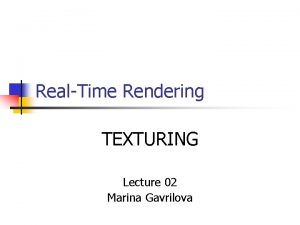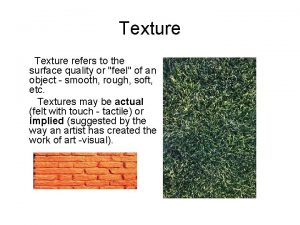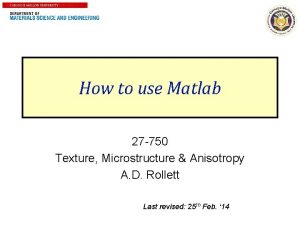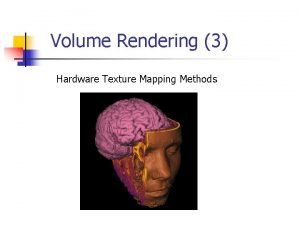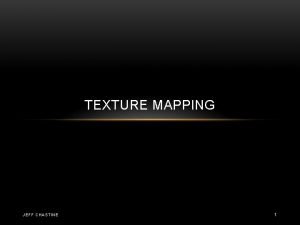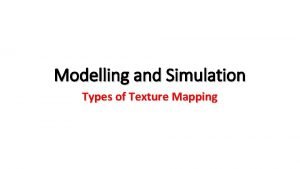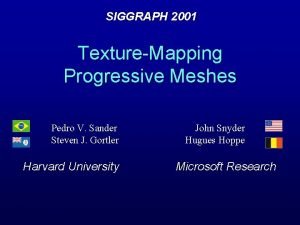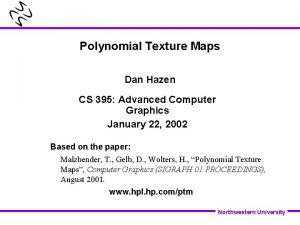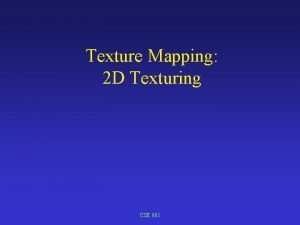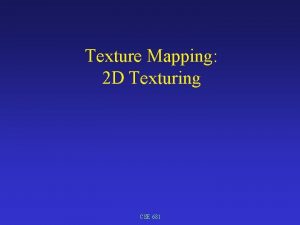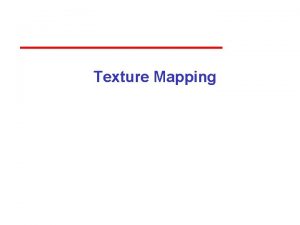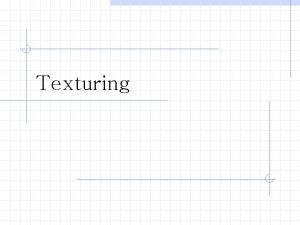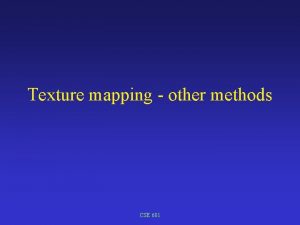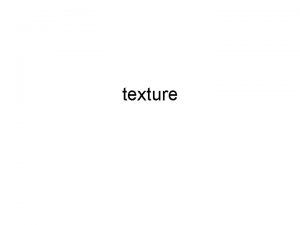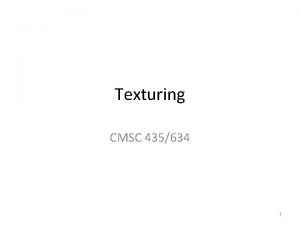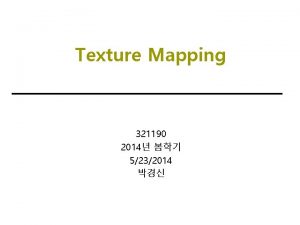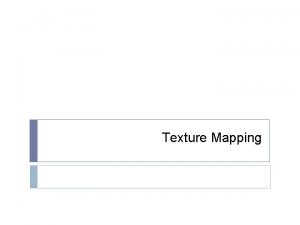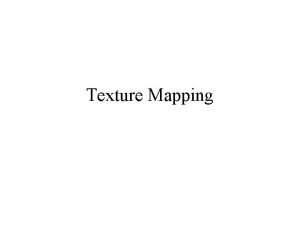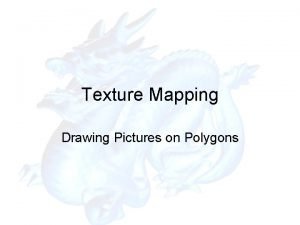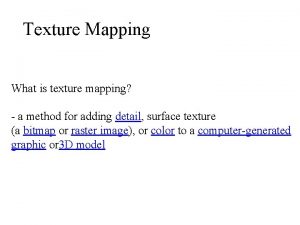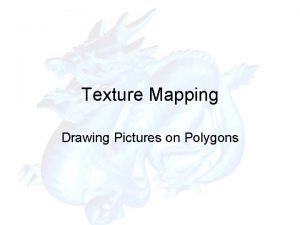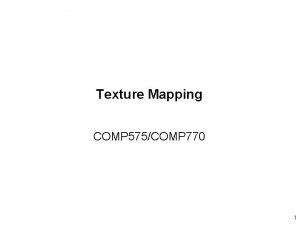Texture Mapping 2 D Texturing CSE 681 Texture











![Closer still Use closest value? tx[i+1][j] tx[i+1][j+1] (s, t) tx[i][j] tx[i][j+1] CSE 681 Closer still Use closest value? tx[i+1][j] tx[i+1][j+1] (s, t) tx[i][j] tx[i][j+1] CSE 681](https://slidetodoc.com/presentation_image_h/24d2cb1f1301cb2221994a5b6dc92506/image-12.jpg)
![Closer still t[i+1][j] t[i+1][j+1] Interpolate 4 closest? (s, t) t[i][j] t[i][j+1] CSE 681 Closer still t[i+1][j] t[i+1][j+1] Interpolate 4 closest? (s, t) t[i][j] t[i][j+1] CSE 681](https://slidetodoc.com/presentation_image_h/24d2cb1f1301cb2221994a5b6dc92506/image-13.jpg)


- Slides: 15

Texture Mapping: 2 D Texturing CSE 681

Texture Mapping Visual complexity on demand Vary display properties over object Visible pixel maps to location on object Location on object used to lookup display attributes Or as function parameters to generate attributes CSE 681

2 D Texture Mapping Usually a 2 D rectangular image or function Parameterize using (u, v) texture coordinates texture v u CSE 681

2 D Texture Mapping Need to parameterize surface similar to texture sphere quadrilateral u v v u latitude - longitude CSE 681 bilinear interpolation

Texture as table of values texture Table of values 0, 0 0, m-1 v u n-1, 0 n-1, m-1 Values at grid intersections CSE 681

For sphere Texture Map Coordinates 1 v 0 World Space 0 u Map (x, yz) to u, v space to table values CSE 681 1

For sphere map sphere surface to (u, v) 1 q z 1 0 x y a x 0 BUT Has a seam & distorts CSE 681

For quadrilateral Texture Map Coordinates 1 v 0 World Space 0 u Map (x, yz) to u, v space to table values CSE 681 1

World space point to u, v space P 1, 0 P 1, 1 P 0, 0 CSE 681 P 0, 1

1 u, v space to table indice space 0 0 v 1 u n-1 s CSE 681 0 0 u 1

A closer look (s, t) World Space Values only at the intesections What value to use at non-intersection point? CSE 681
![Closer still Use closest value txi1j txi1j1 s t txij txij1 CSE 681 Closer still Use closest value? tx[i+1][j] tx[i+1][j+1] (s, t) tx[i][j] tx[i][j+1] CSE 681](https://slidetodoc.com/presentation_image_h/24d2cb1f1301cb2221994a5b6dc92506/image-12.jpg)
Closer still Use closest value? tx[i+1][j] tx[i+1][j+1] (s, t) tx[i][j] tx[i][j+1] CSE 681
![Closer still ti1j ti1j1 Interpolate 4 closest s t tij tij1 CSE 681 Closer still t[i+1][j] t[i+1][j+1] Interpolate 4 closest? (s, t) t[i][j] t[i][j+1] CSE 681](https://slidetodoc.com/presentation_image_h/24d2cb1f1301cb2221994a5b6dc92506/image-13.jpg)
Closer still t[i+1][j] t[i+1][j+1] Interpolate 4 closest? (s, t) t[i][j] t[i][j+1] CSE 681

(Pixel) size matters World Space Can’t just use pixel center and expect good results in all cases - need to consider how entire pixel maps into texture space CSE 681

One solution: Mip-mapping Pre-filter texture, reducing resolution (increase size of grid relative to pixel size) Successive table of values (r, g, b) at reduced resolution Down to single pixel Index into highest resolution one in which bilinear interpolation makes sense CSE 681
 Marina gavrilova
Marina gavrilova What is 239 rounded to the nearest hundred
What is 239 rounded to the nearest hundred 681 complex inc
681 complex inc 681 complex inc
681 complex inc Cs 681
Cs 681 You can touch and feel an implied texture.
You can touch and feel an implied texture. Matlab texture mapping
Matlab texture mapping Summed-area tables for texture mapping
Summed-area tables for texture mapping Texture mapping algorithm
Texture mapping algorithm Texture mapping
Texture mapping Texture mapping types
Texture mapping types Texture mapping progressive meshes
Texture mapping progressive meshes Northwestern university
Northwestern university 2d texture mapping
2d texture mapping Forward mapping vs backward mapping
Forward mapping vs backward mapping The associative mapping is costlier than direct mapping.
The associative mapping is costlier than direct mapping.
